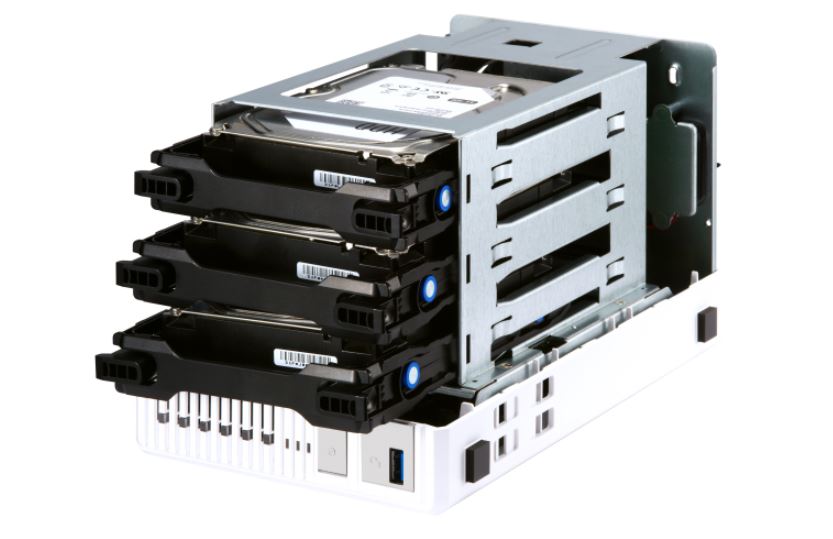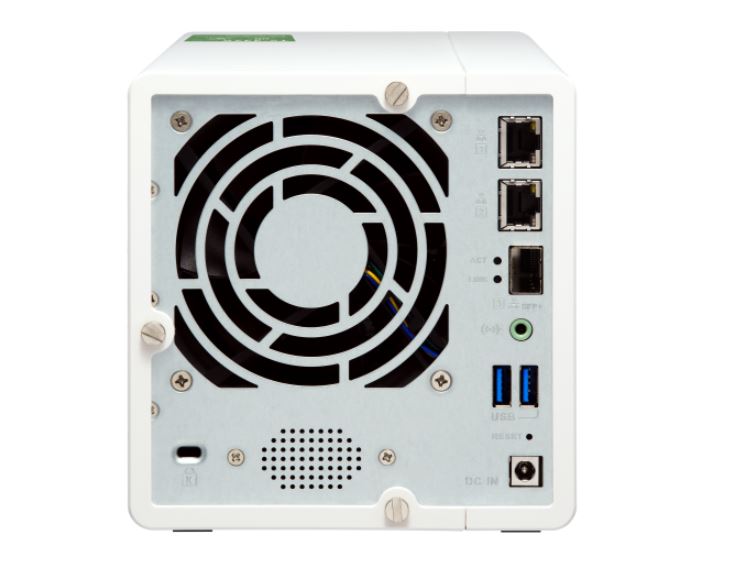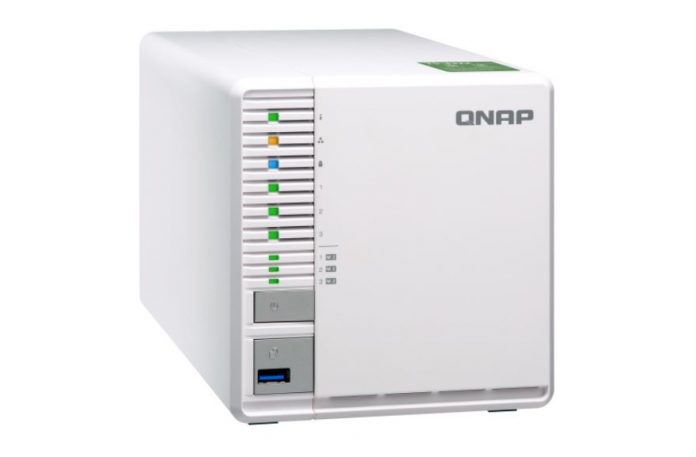QNAP has been aggressive in addressing the low-end RAID 5 space recently. The company says that about 30% of its users configure RAID 5. We recently reviewed the QNAP TS-328 3-Bay Low-Cost RAID 5 NAS and now the company has another product in the segment: an Arm-based 10GbE RAID 5 NAS called the QNAP TS-332X. In the lineup are the TS-332X-2G (2GB RAM) and TS-332X-4G (4GB RAM) models that give some price flexibility to the solution.
QNAP TS-332X 3-Bay NAS with 10GbE
Like the QNAP TS-328 that we reviewed, the 3-bay QNAP TS-332X uses a breakaway clamshell design instead of external hot swap to save on costs. This is a fairly common trade-off in this segment.

Under the hood is an Annapurna Labs Alpine AL-324 a 1.7GHz quad-core CPU. This is in many ways similar to the chip we reviewed in our exclusive: Gigabyte Annapurna Labs ARM storage server benchmarks back in 2015. Annapurna Labs is an Amazon company now and its chips are popular for storage servers.

One of the key features is the low-cost 10GbE connectivity. The TS-332X adds 10GbE via an SFP+ cage along with two 1GbE RJ-45 ports making this an especially capable 3-bay NAS.
This is probably not the CPU you want for heavy virtual machine or container hosting. The 1.7GHz Arm Cortex A57 solution can handle RAID 5 speeds with 3 disks and some lightweight container hosting, but it is not the fastest CPU out there. We think that the vast majority of users will pick the 2GB or 4GB of RAM models and not upgrade them fully to 16GB.
Final Words
Although there are concerns with RAID 5, large arrays, and large hard drives, at the end of the day, there is a market. QNAP’s data suggests 30% of its users turn to RAID 5 so its aggressive pursuit of this market with products like the QNAP TS-332X makes sense. The move to an Arm CPU to get some additional SFP+ 10GbE networking capability and matching the SoC to the chassis also is a great design choice.





The model pictured has the 3 M.2 SATA SSD connectors for SSD tiering. Have you tested this?